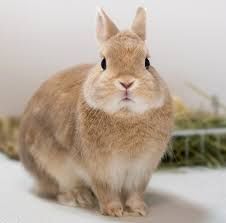What Should You Consider?
One important factor when choosing a rabbit is its gender. While a rabbit’s personality is often influenced by its breed and individual traits, there are noticeable behavioral differences between males and females. Males tend to be more territorial and may claim a larger area. Understanding these habits is essential for choosing a companion that fits well with your lifestyle.
Finding the Perfect Rabbit for Your Lifestyle
The most important consideration is your living environment and how much time you can dedicate to caring for your rabbit. Depending on your situation, the ideal rabbit for you will vary. Take the time to choose the right companion to ensure a fun and rewarding experience with your new pet.
Choosing by Breed
One way to start the selection process is by looking at different breeds. Each breed has its own characteristics and care needs. Factors like size, fur type, and ear shape are all important considerations. For more details, refer to the rabbit catalog (P16-37).
Physical Traits
Rabbits come in a variety of shapes and sizes, with different fur lengths and ear shapes. Recognized breeds usually have predictable sizes and temperaments, allowing you to anticipate how your rabbit will grow.
- Ear Types: There are both long-haired and short-haired rabbits, as well as those with upright or lop ears. Generally, lop-eared rabbits are known for being more affectionate, while upright-eared rabbits tend to be more playful and active.
Understanding Male and Female Behaviors
- Males: Males are often more territorial and may spray urine to mark their territory. Neutering is usually necessary to reduce this behavior. Males may also rub their scent on various surfaces more frequently than females, especially when emotionally unsettled.
- Females: Adult females are in heat year-round and establish their territory for breeding and raising young. While females may also mark territory when stressed, their instincts are usually focused on parenting.
Distinguishing Between Male and Female Rabbits
For rabbits under three months old, it can be difficult to determine their sex. It’s best to ask for assistance from pet shop staff. In adult males, the testicles are prominent and make them easy to identify, but for younger rabbits, you’ll need to examine the shape of their genitalia.
Considerations for Keeping Multiple Rabbits
- Gender Dynamics: If you plan to keep multiple rabbits, gender can greatly affect compatibility. Male rabbits are highly territorial and can become aggressive toward each other, potentially leading to serious fights. It’s recommended to house male rabbits separately unless they are neutered and closely monitored.
- Female Pairing: Female rabbits are generally less prone to fighting than males, but compatibility still depends on individual personalities. It’s wise to initially house them separately and gradually introduce them through a cage.
Monitoring Behavior
Once the rabbits are introduced, watch closely for signs of stress or aggression. It’s important to provide each rabbit with its own space to prevent territorial disputes.
Health Checklist for Selecting a Healthy Rabbit
When visiting a pet shop, look for the following important health indicators in young rabbits:
- Age: Ensure the rabbit is at least 6 weeks old and has been properly weaned. Early separation can lead to health issues.
- Physical Condition: Look for a rabbit with a solid build and a healthy amount of body fat.
- Eyes: The eyes should be clear, with no discharge.
- Ears: Especially with lop-eared breeds, check for cleanliness and any unusual odors.
- Behavior: A healthy rabbit should be curious and active when you approach its cage.
- Muzzle: Ensure the area around the mouth and nose is clean and dry.
- Teeth: The front teeth should be properly aligned.
- Fur: Look for shiny, clean fur with no signs of skin damage.
- Abdomen: There should be no diarrhea or dirt on the underside.
- Mobility: When placed on the ground, the rabbit should be able to stand confidently without difficulty.
By carefully considering these factors, you’ll be able to choose a rabbit that fits well with your life and brings joy to your home.


Comments